Environmental sustainability is a Pitzer College core value. Named one of the country’s greenest colleges by The Princeton Review, Pitzer was one of the first higher education institutions to create an environmental studies program in the 1970s. Today, Pitzer’s on-campus environmental initiatives range from LEED Platinum-certified residential halls to drought-tolerant landscaping that has helped cut water use in half since 2002.
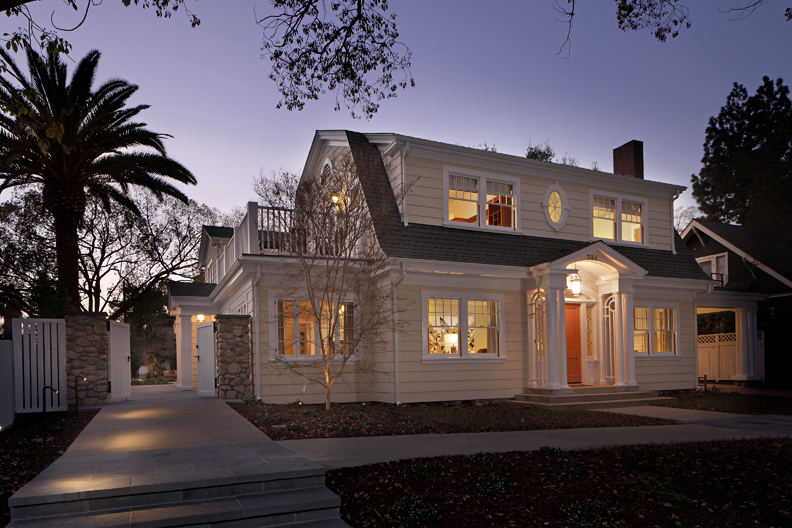
In June 2014, the rehabilitated Pitzer College president’s residence became the first single family residence in Claremont, Calif. to earn Leadership in Energy and Environmental Design (LEED) for Homes certification from the U.S. Green Building Council (USGBC). Improvements that are both environmentally friendly and historically faithful are notoriously challenging, but historic preservation architecture firm Kelly Sutherlin McLeod Architecture, Inc. and Pitzer’s Facilities Department teamed up to create green blueprints that meet the USGBC’s standards for outstanding energy and environmental design. Landscape Architect Lisa Gimmy designed drought-tolerant landscaping that complements the house, the neighborhood and Pitzer’s own low-water campus. The builder, HartmanBaldwin, Inc., followed USGBC’s environmentally responsible construction criteria to ensure that the house met LEED standards.
Pitzer College is also committed to creating an accessible campus. The original section of the president’s residence was built just after World War I, more than 70 years before the passage of the Americans with Disabilities Act. To address accessibility issues, the project design team adapted and expanded the existing structure. The side and back yards were re-graded to make the house’s ground level gathering spaces and outside areas accessible. The president’s house now has two accessible bathrooms and a welcoming, accessible entry.
Renovating Responsibly: US Green Building Council LEED-Certification
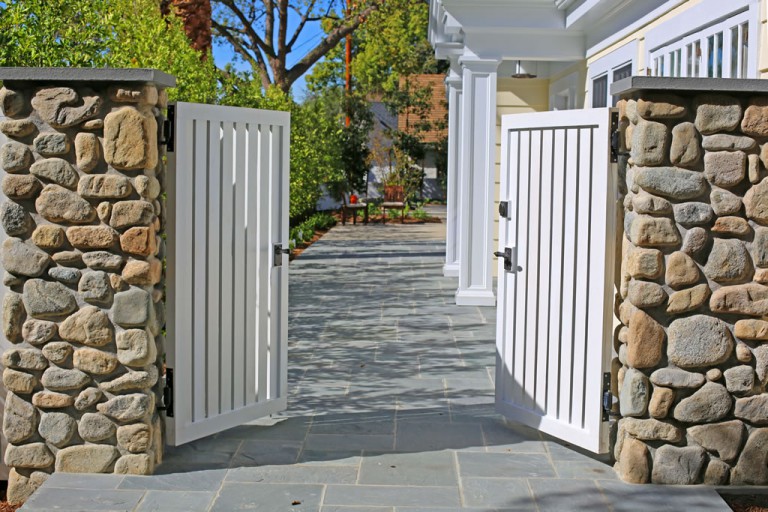 The US Green Building Council developed the LEED rating system to promote the creation of cost-efficient and energy-saving green buildings. During the rehabilitation, the president’s residence was retrofitted with high-efficiency mechanical systems, weather stripping and insulation. Nearly all of the structure’s remaining original features were preserved and restored, including the building envelope, windows and glass, exterior horizontal siding, exterior window and door casings made from old growth redwood, the masonry fireplace and river-rock foundation walls. Removal of a swimming pool added in the 1960s is expected to save 30,000 gallons of water annually.
The US Green Building Council developed the LEED rating system to promote the creation of cost-efficient and energy-saving green buildings. During the rehabilitation, the president’s residence was retrofitted with high-efficiency mechanical systems, weather stripping and insulation. Nearly all of the structure’s remaining original features were preserved and restored, including the building envelope, windows and glass, exterior horizontal siding, exterior window and door casings made from old growth redwood, the masonry fireplace and river-rock foundation walls. Removal of a swimming pool added in the 1960s is expected to save 30,000 gallons of water annually.
A LEED for Homes rating is based on the total number of points a project earns in various compliance categories, such as Innovation & Design Process, Sustainable Sites and Indoor Environmental Quality. Shellie Collier of Homage Design served as the project’s LEED Green Rater, consulting on sustainability issues and guiding the renovation team through the LEED certification process. The Pitzer president’s residence will be awarded LEED points for numerous green features, including:
- Installing a high-efficiency irrigation system with a sensor-driven controller that uses approximately 30 percent less water than that allotted by California regulations
- Recycling 80 percent of construction waste
- Using state-of-the-art energy software to optimize energy performance
- Exceeding California energy standards by 19 percent
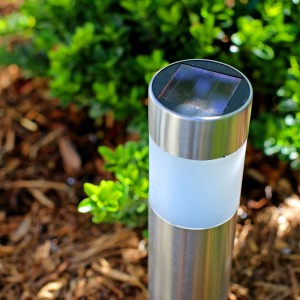
- Meeting Energy Star for Homes standards
- Stockpiling and protecting topsoil from erosion
- Controlling water runoff from construction site to protect downstream waterways
- Using non-toxic bait system for termites and passive pest control methods
- Testing ducting to confirm duct leakage is less than 6 percent
- Installing high-efficiency plumbing fixtures and fittings
- Installing ENERGY STAR light fixtures indoors
- Installing photovoltaic exterior lights
- Installing ENERGY STAR appliances and sensor-controlled bathroom fans
- Employing non-HCFC refrigerants
- Protecting air quality by venting all combustion appliances and installing carbon monoxide monitors on each floor
- Laminating glass in new windows with integrated film to provide enhanced Solar Heat Gain Coefficient, a measure of solar radiation
- Building on previously developed land rather than pristine, undeveloped land
- Minimized dependence on vehicles due to close proximity to community resources
- Replacing lawn with low-water Buffalo Grass
- Planting drought-tolerant vegetation
Low-Water Landscaping
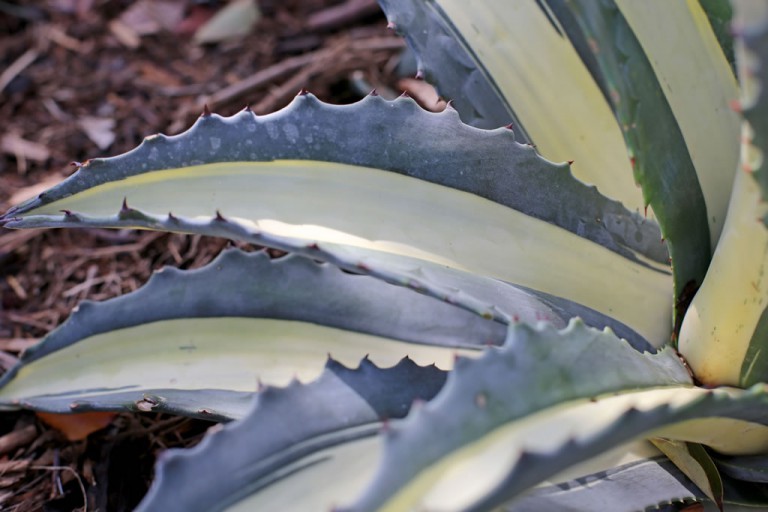 Lisa Gimmy Landscape Architecture designed the home’s drought-tolerant landscape. Known for her sustainable and site-sensitive designs, Gimmy worked closely with Joe Clements, Pitzer College arboretum manager and the former curator of the desert garden at the Huntington Botanical Gardens, on the final plant selection.
Lisa Gimmy Landscape Architecture designed the home’s drought-tolerant landscape. Known for her sustainable and site-sensitive designs, Gimmy worked closely with Joe Clements, Pitzer College arboretum manager and the former curator of the desert garden at the Huntington Botanical Gardens, on the final plant selection.
The landscape design for the president’s residence achieves several goals: providing new spaces that accommodate Pitzer events; tying into the historic neighborhood; and meeting LEED certification standards for sustainability and resource conservation.
To accommodate foot traffic during College events, the front garden provides new accessible walkways to the house’s south-side entry. The walkways are surrounded by drought-tolerant UC Verde Buffalo Grass and beds are planted with native Manzanita and a single flowering Crape Myrtle. The river-rock pillars on each side of the new entry gate fit with the neighboring landscape.
In the rear garden, the perimeter of drought-tolerant Brisbane Box and Carolina Laurel Cherry creates a sense of privacy. Agaves, succulents and salvias evoke Pitzer’s campus, and a Coast Live Oak serves as a focal point in a raised river-rock planter that also provides informal seating. Fresh fruit and vegetables grow in a small garden and assorted citrus trees.
Additional sustainable features of the landscape include low-flow irrigation, use of reclaimed and recycled materials, and LED lighting.
Interior Design
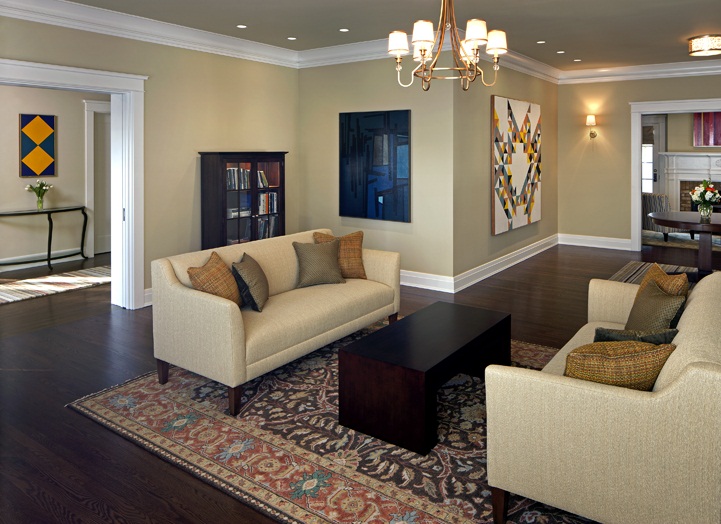 Kelly Sutherlin McLeod Architecture, Inc. designed more than half of the furniture in the house’s public spaces to be sustainably sourced, either in frame construction, eco-friendly fabric selection, domestic manufacturing or regional origin. Plumbing fixtures are water-efficient, counters are made from recycled composite stone and recessed lights use high-efficacy LED or fluorescent bulbs; and low-VOC paint to protect indoor air quality.
Kelly Sutherlin McLeod Architecture, Inc. designed more than half of the furniture in the house’s public spaces to be sustainably sourced, either in frame construction, eco-friendly fabric selection, domestic manufacturing or regional origin. Plumbing fixtures are water-efficient, counters are made from recycled composite stone and recessed lights use high-efficacy LED or fluorescent bulbs; and low-VOC paint to protect indoor air quality.
Although there is no single definition of what constitutes sustainable furnishings, the design team drew up guidelines for the interior of the Pitzer president’s residence that included:
- Furniture made with recycled, renewable or reclaimed products
- Fabric fibers that come from rapidly renewable resources with growth and harvest cycles of 10 years or less without the use of pesticides, fungicides, herbicides and chemical fertilizers
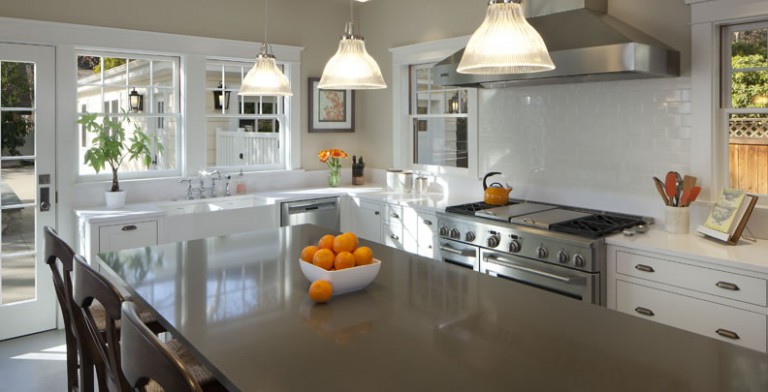
- Furniture that uses soy- and corn-based foam and fibers or down instead of petroleum-based products
- Furniture that uses Forest Stewardship Council (FSC) wood in frame construction
- Domestically and regionally made products to reduce carbon footprint
- Purchasing products from companies that use eco-friendly manufacturing processes
For more information on LEED certification, please visit: LEEDing the Way
Pitzer’s Pledge: Statement of Environmental Policy and Principles
Pitzer College strives to incorporate socially and environmentally sound practices into the operations of the College and the education of our students. Pitzer exists within inter-reliant communities that are affected by personal and institutional choices and the College is mindful of the consequences of our practices. A Pitzer education should involve not just a mastery of ideas, but a life lived accordingly. We are thus committed to principles of sustainability, and dedicated to promoting awareness and knowledge of the impacts of our actions on humanity and the rest of nature.